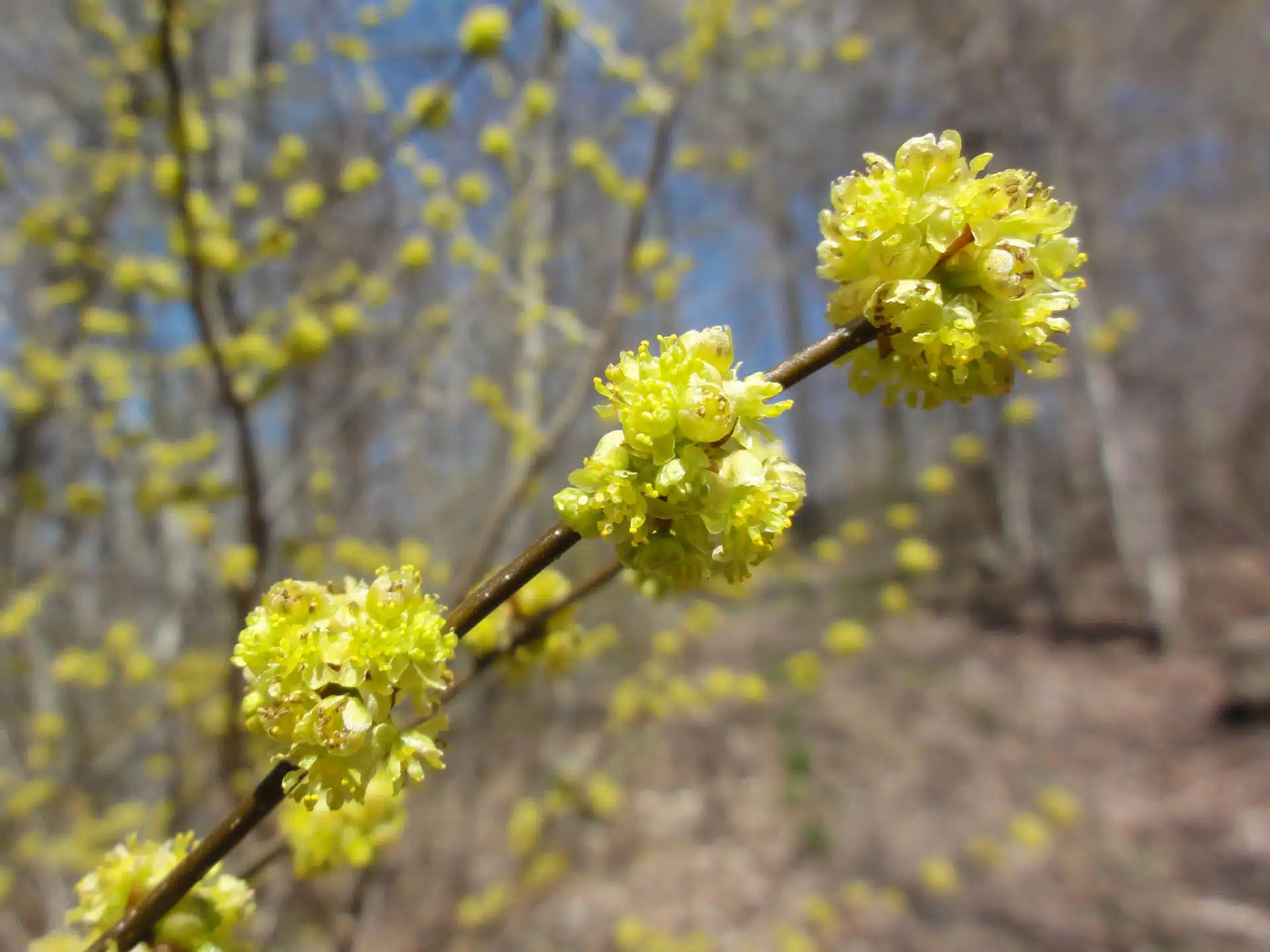Plants
Spicebush
Lindera benzoin

At The Holden Arboretum, Lindera benzoin, spicebush, is one of the most common shrubs in our natural areas. There are fine plantings of spicebush in the Arlene and Arthur S. Holden Jr. Butterfly Garden, the Myrtle S. Holden Wildflower Garden, west of Blueberry Pond, and at Lantern Court. Lindera is a member of the Lauraceae, a family that includes our native Sassafras as well as a greater number of tropical and warm temperate plants, including bay laurel and avocado.
Native from Maine to Florida and west as far as Iowa and Texas, these beautiful shrubs inhabit most, rich woodlands. The name spicebush is in reference to the pleasant spicy aroma of its crushed leaves, stems or fruits. The twigs and foliage are not so spicy that they always deter browse from white-tailed deer, although they are certainly not their preferred food.
In April, the small yet profuse yellow flowers adorn the branches in a subtle display. Individual plants are either male or female, with both required for fruit. The females have shiny red fruit from September to November if the birds don’t devour them first. The fruit, along with the fruits of sassafras, tupelo and flowering dogwood is high in lipids (fats) that are particularly useful to migrating birds. Lindera benzoin is a larval host to the spicebush swallowtail butterfly. In October its foliage turns bright yellow. The red fruit, if not taken by great crested flycatcher, veery, wood thrush, red-eyed vireo and the like, is much more visible following leaf drop.
Growth rate of our plants has been a foot or more per year when young. Two to three foot tall plants typically grow 9-11 feet tall in six years. Also, for such plants fruiting has begun during the first three to six years. Plants are best transplanted when young as they quickly establish a rather coarse, deep root system that resents disturbance.
Spicebush is most appropriate in a naturalistic landscape. For people who wish to plant natives of known local provenance, a landscaper can obtain plants from wholesale growers in Lake County that grow their stock from seed collected from the wild locally. This is a charming yet underutilized shrub that deserves to be planted more in our landscapes.




